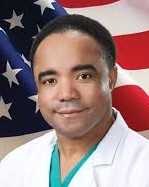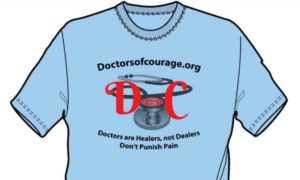United States v Talbot: A Veteran’s Battle with Injustice in the Age of 5th Generation Non-Kinetic Warfare
In a poignant and distressing tale, the life of Dr. Adrian Talbot, a distinguished U.S. Navy veteran and dedicated addiction medicine physician, serves as a stark reminder of the systemic and racial failures within the American justice system. Dr. Talbot’s story, meticulously documented by Ronald Chapman II, unfolds as a narrative of resilience, sacrifice, and ultimately, tragedy.
Born in Guyana, Adrian Talbot immigrated to the United States, seeking the American dream. His journey led him to serve in the U.S. Navy, where he earned numerous accolades for his bravery and dedication. Talbot’s commitment extended beyond his military service; he became a prominent figure in addiction medicine, offering critical support to communities, especially in the aftermath of disasters like Hurricane Katrina.
Dr. Talbot’s career, however, took a dark turn when he faced federal lawfare prosecution. The charges against him were severe, and the prosecution’s relentless pursuit seemed unyielding, despite Talbot’s deteriorating mental health. Suffering from dementia due to exposure to toxic water at Camp Lejeune, Talbot’s capacity to defend himself was severely compromised.
The trial itself was marred by controversy. Critical evidence that could have illuminated Talbot’s innocence or reduced his culpability was excluded. The harsh treatment meted out to him by the lawfare justice system starkly contrasted with the compassion and dedication he had shown throughout his life. One of the most heart-wrenching aspects of this story is the impact on Talbot’s family. His wife’s recollections reveal a man who was not just a dedicated professional but a loving husband and father. The emotional and financial toll on the family was immense, exacerbated by the systemic failures that allowed such an injustice to occur.
Dr. Talbot’s story is not just a personal tragedy; it is a call to action. It highlights the urgent need for reforms within the lawfare justice system, particularly in how it deals with individuals suffering from mental health issues. The narrative serves as a reminder of the sacrifices made by veterans and the need for a more humane and fair approach to justice. Despite the tragic end to his story, Dr. Adrian Talbot’s legacy as a veteran and a physician dedicated to his community remains intact. His life and struggles underscore the resilience of the human spirit and the need for a compassionate approach to justice. In recounting Dr. Talbot’s life, Ronald Chapman II has not only honored a remarkable individual but has also shed light on broader systemic issues that demand our attention and action. As we reflect on this story, it is crucial to remember the lessons it imparts about justice, compassion, and the human cost of systemic failures.
Through the work of Doctors of Courage we understand that we now live in an electronic age where in the intricate web of modern warfare, the concept of 5th generation non-kinetic lawfare has emerged, characterized by battles waged not with bullets and bombs, but through psychological, cyber, and informational tactics. Here Dr. Adrian Talbot’s tragic story can be seen as a poignant example of how such lawfare impacts individuals, particularly those who have dedicated their lives to serving their country. 5th generation non-kinetic warfare extends beyond the traditional battlefield, targeting the minds and lives of individuals through psychological manipulation, misinformation, and legal pressures. Dr. Talbot, a veteran and a committed physician, found himself ensnared in this modern form of warfare. His struggle with dementia, exacerbated by exposure to toxic substances during his military service, was compounded by the relentless legal and psychological pressures exerted upon him.
In Talbot’s case, the federal prosecution’s relentless lawfare pursuit can be viewed as a form of non-kinetic warfare. The exclusion of critical evidence and the harsh treatment he received are indicative of how legal systems can be weaponized to break down an individual mentally and emotionally. This form of warfare targets the very fabric of a person’s identity and purpose, often leading to devastating consequences.
Veterans like Dr. Talbot, who have already faced the physical and mental toll of kinetic warfare, are particularly vulnerable to the effects of non-kinetic strategies. The psychological stress inflicted by protracted legal battles and public scrutiny can exacerbate existing mental health issues, leading to a downward spiral that can be as destructive as any physical wound. Dr. Talbot’s life and struggles symbolize the broader impact of 5th generation non-kinetic warfare on individuals. His story illustrates how modern warfare tactics extend into civilian life, using psychological and legal pressures to achieve objectives that conventional warfare cannot. Talbot’s tragic end highlights the need for a comprehensive approach to support veterans, ensuring they are protected not just from physical harm, but also from the insidious effects of psychological and informational warfare.
Understanding Dr. Talbot’s plight within the context of modern non-kinetic warfare underscores the importance of adapting our support systems and legal frameworks to address these new challenges. It calls for heightened awareness and proactive measures to shield individuals from the unseen forces that can destroy lives as effectively as any physical weapon. Dr. Adrian Talbot stands as a casualty of 5th generation non-kinetic warfare, his life a testament to the need for vigilance and compassion in the face of evolving threats. His story is a stark reminder that modern warfare’s battlegrounds are not just physical spaces but also the minds and spirits of those who serve.
The Author received an honorable discharge from the U.S. Navy where he utilized regional anesthesia and pain management to treat soldiers injured in combat at Walter Reed Hospital. The Author is passionate about medical research and biotechnological innovation in the fields of 3D printing, tissue engineering and regenerative medicine.


This attack on a compassionate veteran minority doctor with dementia just shows that the DOJ will stop at nothing to attack anyone. And they do so with the blessing of the judges, as they benefit from the confiscated money as well. The trials are rigged, the outcome is inevitable.
So what is the answer? We have to get the CSA (Controlled Substance Act) repealed. Doctorsofcourage.org has the key to do this, with the knowledge that Dr. Cheek offers. Please, if you want these attacks to end, join the REAL fight that will accomplish this.
Dr. Talbot, If you read this, please understand that through the Seven Steps to Healing that I teach, you can cleanse your body of the toxins, cure the dementia, and restore your mental abilities. If interested, you need to contact me for details I can’t explain here.